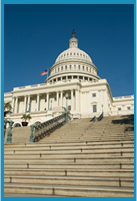Victim Media Advocacy:
How to Facilitate Sensitive and Respectful Treatment of Crime Victims
![]()
PAGE INDEX
a. Policy Development and Implementation
b. Funding and Resource Development
The news media have helped educate the American public about crime, victimization, and its devastating impact on individuals, families, and communities. Whether it’s coverage of a high-profile trial or a feature story on one victim’s efforts to survive in the aftermath of crime, the news media continually alert people to—
- The scope of and current trends in crime and victimization.
- Victim/offender relationships, including the fact that the majority of offenders know their victims.
- New types of crimes the public should be aware of, such as human trafficking, Internet crimes, and scams.
- The personal nature and impact of crime on individuals—people who could be our family members, neighbors, or friends.
 For example, the 1992 publication of the landmark Rape in America: A Report to the Nation resulted in nearly 113 million people in America who either watched, heard, or read about the report. It's sponsors received more than 150 media inquiries in connection with its publication. Embargoed copies of Rape in America were provided in advance to rape crisis centers nationwide, so they were able to offer local angles, victim spokespersons, and experts to address the contents of the report.1 1 Lak Vohra, 1992. Media Strategies and Accomplishments for Rape in America, Arlington, VA: National Center for Victims of Crime (formerly the National Victim Center). (See footnote on bottom of page to activate link.)
For example, the 1992 publication of the landmark Rape in America: A Report to the Nation resulted in nearly 113 million people in America who either watched, heard, or read about the report. It's sponsors received more than 150 media inquiries in connection with its publication. Embargoed copies of Rape in America were provided in advance to rape crisis centers nationwide, so they were able to offer local angles, victim spokespersons, and experts to address the contents of the report.1 1 Lak Vohra, 1992. Media Strategies and Accomplishments for Rape in America, Arlington, VA: National Center for Victims of Crime (formerly the National Victim Center). (See footnote on bottom of page to activate link.)
Law enforcement and prosecutors often seek media attention to inform the public of increases in specific crimes, encourage witnesses to come forward, and engage the community in crime prevention, victim assistance, and public safety initiatives.
a. Policy Development and Implementation
The news media cover politics and public policy development at the national, state, and local levels and often offer political analysis of key bills that promote public safety, victims’ rights, and victim services. Often, victims and survivors and victim service providers are asked to serve as spokespersons for public policy issues. The “power of the personal story” of victims remains a vital and effective tool for both good media relations and strong public awareness campaigns.
 The national office of Mothers Against Drunk Driving (MADD) credited the news media with helping to create a groundswell of support in 1984 for its “S.O.S.” (Save Our Students) campaign that resulted in the passage of the National Minimum Drinking Age Act of 1984. The ultimate passage of the Violence Against Women Act of 1994 was preceded by endless stories of battered women and rape survivors and their need for expanded services, and each year, the commemoration of National Crime Victims’ Rights Week in April is accompanied by a renewed media focus on victims’ rights, needs, and concerns.
The national office of Mothers Against Drunk Driving (MADD) credited the news media with helping to create a groundswell of support in 1984 for its “S.O.S.” (Save Our Students) campaign that resulted in the passage of the National Minimum Drinking Age Act of 1984. The ultimate passage of the Violence Against Women Act of 1994 was preceded by endless stories of battered women and rape survivors and their need for expanded services, and each year, the commemoration of National Crime Victims’ Rights Week in April is accompanied by a renewed media focus on victims’ rights, needs, and concerns.
b. Funding and Resource Development
Since many victim assistance organizations rely on private donations for their sustenance, it’s important for community members to be aware of the intrinsic value of victim services and the many resources they offer to a community. Strong media relations result in positive coverage that educates community members about victim services and their ongoing need for financial and volunteer support. In many communities, the news media not only publicize fundraising efforts but also their “parent companies” often support them (e.g., through media companies’ co-sponsorship of fundraising activities or public awareness events).
1. Lak Vohra, 1992. Media Strategies and Accomplishments for Rape in America, Arlington, VA: National Center for Victims of Crime (formerly the National Victim Center).





